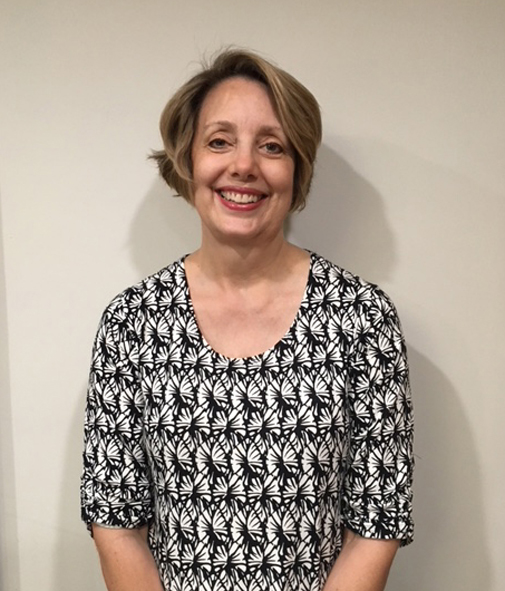Psynergy welcomes new Program Manager to Morgan Hill campus

April 12, 2018 - Cathy Adams, OT/L, MS, formerly of El Camino Hospital in Mountain View, CA has joined the Psynergy Programs team in Morgan Hill as program manager. Adams, who supervised all occupational therapy programming in behavioral health services and oversaw a team of nine occupational therapists at El Camino Hospital in her 20-year tenure, is expected to elevate Psynergy’s occupational therapy program to a very high level.
“Occupational Therapy is a specialized vocation, with unique skills that other staff members don’t have,” says Psynergy founding partner and CFO Mike Weinstein. “We’ve wanted to bring in an occupational therapist forever, but we wanted to find exactly the right person. Cathy has an ideal background, supervising nine occupational therapists and running several successful programs in her previous position. She has a wealth of experience that’s amazing.”
While Adams will be based in Morgan Hill, part of her purview will include developing lesson plans that can percolate to other Psynergy campuses in Greenfield and Sacramento. “We don’t want each location reinventing the wheel,” says Weinstein. “We try to maintain consistency in how our programs are handled, and we are confident that Cathy can take us to the next level, fine-tuning well-tested programs as well as developing new ones.”
Core programs that Weinstein wants to establish or augment include social and lifestyle skills, developing personal interests that encourage participants to find something meaningful to do with their time, physical health and exercise and nutrition.
For Adams, joining Psynergy was an opportunity to work closer to home and have a positive impact on the population there. When asked to summarize the underlying goal of the programs she develops, Adams had an answer ready.
“Facilitating each client’s capacity to function at their best level, and helping them to engage in a life that is meaningful and satisfying to them is how I would characterize my job,” she says. “We accomplish that by developing different therapeutic occupations that give meaning and purpose to the present moment – in order to build social skills, cope with challenges, make choices according to personal values and craft a life with purpose and meaning. We help clients find value in what they are doing on a day-to-day basis. Engagement with a group helps them to reach their highest functional level.”
In addition to coping with symptoms, Adams says she likes to work with two overarching themes: community involvement with a sense of contribution, and programs centered around gratitude. “Focusing on gratitude positively affects brain chemistry, increasing serotonin that improves mood,” says Adams.
Adams employs a full range of program options to get the ball rolling, ranging from sensory modulation to promote self-regulation at a physiological level, arts and crafts to promote cognitive functioning, self expression and self-efficacy, dance, exercise and karaoke.
Art is often a good place to start, providing an inroad to motivation and engagement. “I do arts and crafts interventions, where clients create projects that improve focus, sense of accomplishment and executive functioning,” says Adams. “Working with your hands and intent focus is a is a powerful experience of mindfulness for those experiencing anxiety. Engaging in a purposeful, meaningful activity is grounding, brings one into the present moment, and out of that ‘spin cycle’ in the head.”
Beyond the art realm, a wide range of other programs now in development address topics ranging from foot care to money management, based on the needs of smaller groups of residents. For all residents, Adams is coordinating occupational therapy exercise classes that include large motor movements that help with strength, coordination and balance for everyday functioning. Reciprocal movements require the individual to cross the midline of the body and move in several planes in space. “Crossing the midline gets both hemispheres of the brain coordinating with each other. It organizes and readies the brain for learning, which is what we all need,” she says.
